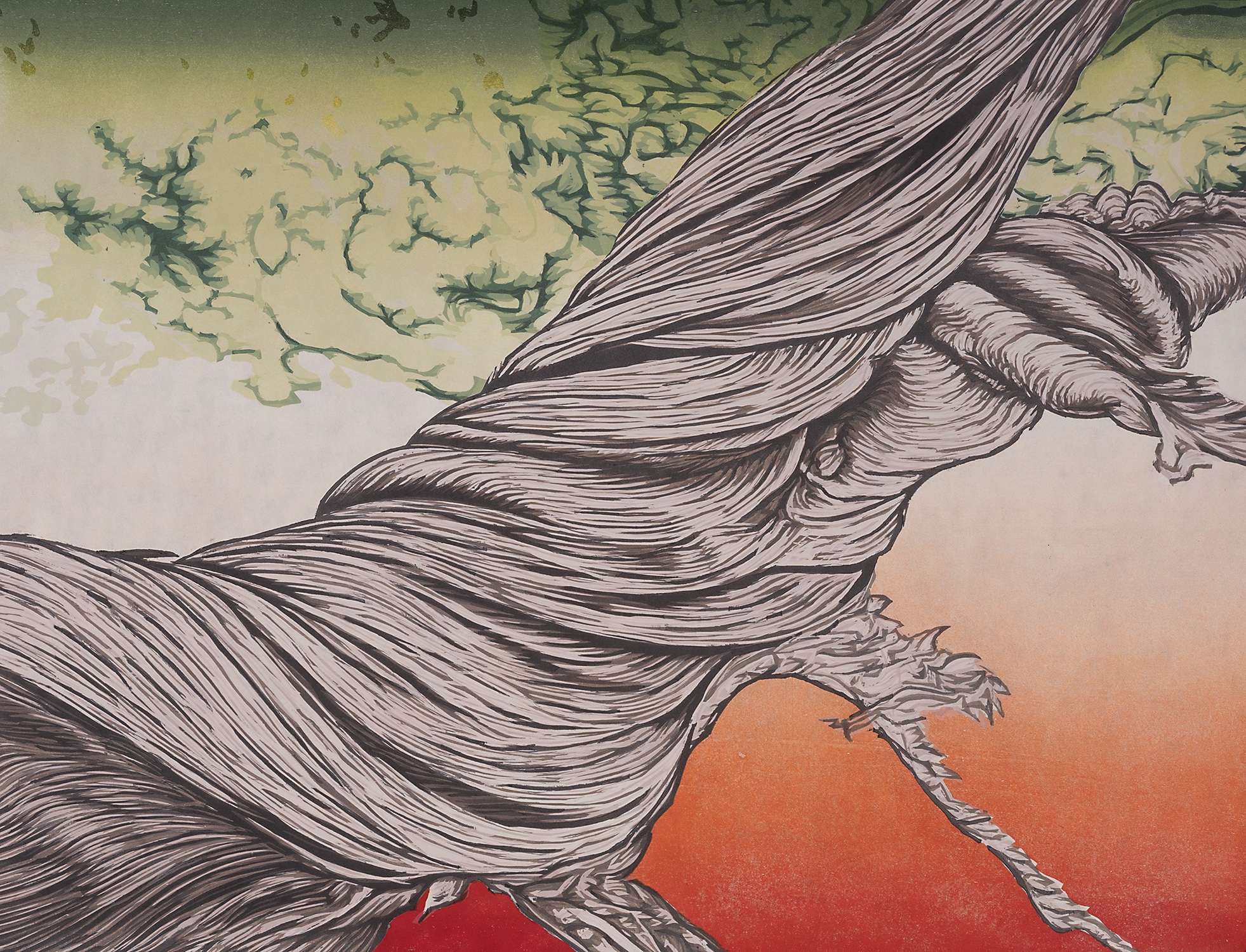Some information may be outdated.
The “Sentinels” exhibit, currently on display at Utah State University Moab Extension, is an art and science project created by printmakers Todd Anderson and Bruce Crownover and social ecologist Gary Machlis.
This collaborative exhibit demonstrates the migration of pinyon pine and juniper trees as a result of increased dryness in the American Southwest, as studied in Bears Ears and Grand Staircase-Escalante national monuments. Science Moab chatted with the project creators about how, and why, they put Sentinels together.
Science Moab: How is climate change impacting the pinyon and juniper ecosystem? Why bring awareness to it?
Machlis: I think there are lots of reasons. One is the extraordinary beauty of these ecosystems. Another, which created the title of our work, is that these trees are sentinels: they warn us about broader, deeper changes that we might not always see. The third reason is that our attitudes toward conserving pinyon pine and juniper have changed dramatically—as late as 1980, chaining to destroy as much as they could to make it open for cattle was the standard practice accepted as conservation for other purposes. [Chaining is a mechanical method of removing trees and woody vegetation.] And we’ve had a major turnaround to understand the value of juniper and pinyon pine ecosystems, not just because they’re under stress, not just because they’re beautiful, but because we better understand them now, for their complexity and value.
Science Moab: Why was the project done in Bears Ears and Grand Staircase-Escalante?
Anderson: Bruce and I have been working on these projects for about a dozen years in different parts of the country. In collaborating with Gary and trying to understand what’s happening in this part of the country, we wanted to bring specificity to the project. We always want to highlight public lands—one way we’ve found to be effective to connect our work with the public is if we all have a shared stake in the places we’re talking about.
Science Moab: What did you each contribute to the project?
Crownover: All these projects are really based in a particular place. So I kind of want to wrap my mind around, okay, what is this place? The idea for me is just to go to that place with little pieces of paper and a phone camera and to spend time there. For me, making drawings and paintings forces me to sit and stare at something for a long time. When I go back to my studio in Madison (Wisconsin), that’s when the real artistic work begins.
The technique Todd and I both do is called “reductive woodcut.” We use one piece of wood for all of our colors—it’s sort of a tricky process. I’m not really trying to adhere to the painting or drawing I made when I was in the field; instead, I’m letting the print dictate the process. I’m really trying to devote some of my personality and the integrity that I have towards these places. I want that to come through in the artwork, and that takes time.
Machlis: After a day of looking at the different trees and walking with Todd and trying to learn about how he saw this as an artist, I would journal and write notes. As the collaboration developed, the texts became what we call “word paintings.” The words weren’t just what they said, but how they were put together and how they were visualized. And so I worked with Todd to make sure that the word paintings actually had a visual component to them as important as the text.
Science Moab: This project exists in print/exhibit form but also in a book form. Why did you put it together this way?
Anderson: One of the things that art can do is, it has this great ability to serve as a tool for dialogue with future generations. The goal for these books is to leave information and inform future generations about some of the things that we were thinking about in the early 21st century—the things we cared about, the state of the environment in this particular place.
We’re trying to talk about the present moment and why these things are important. But then also we want to extend that conversation through time and create something that can outlive all three of us.
Science Moab is a nonprofit dedicated to engaging community members and visitors with the science happening in Southeast Utah and the Colorado Plateau. To learn more and listen to the rest of this interview, visit www.sciencemoab.org/radio.
Appreciate the coverage? Help keep local news alive.
Chip in to support the Moab Sun News.





